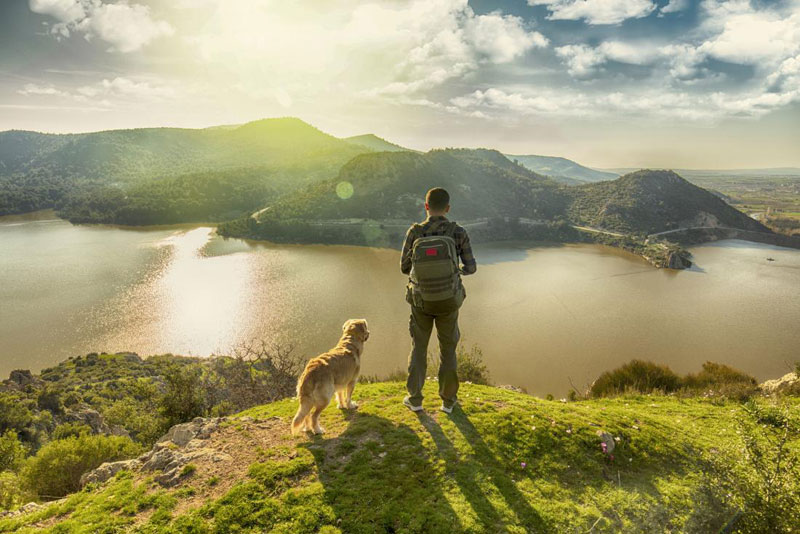Sunday Jan 11, 2026
Sunday Jan 11, 2026
Saturday, 2 April 2022 00:00 - - {{hitsCtrl.values.hits}}

|
By Ranjit S. Seneviratne
While it is great that so much progress has been made to reduce pollution from petroleum fuels used by vehicles and industry by going solar, it is time that we started a second front in the fight against climate change – reducing the pollution by the food industry – especially animal husbandry which reportedly causes more pollution than all the vehicles and machinery combined, not to mention plastic pollution of the sea and its creatures (with micro-plastics) by the food packaging industry.
There is already a sizeable movement towards eating healthy foods – especially the food humans ate before the discovery of fire – raw green leaves, fruits, nuts and maybe eggs and fish – variously called “Paleo Diet”, “Genesis Diet” (Gen. Ch.1 v 29 (King James Version) and the Ketogenic Diet.
While I have solar electricity for my home, a hybrid electric vehicle and solar hot water heating, natural air-conditioning, and water harvesting systems, I also have a food garden of edible weeds and trees with edible leaves and berries. I gave up growing conventional vegetables because they are so weak and difficult to grow, (probably nutritionally weak too) so unlike the many indigenous “medicinal plants” which also double up as food which grow so vigorously.
I do not eat meats or grains which are energy intensive and therefore my personal carbon footprint is very small – in fact it is negative because the weeds and trees I grow remove carbon from the atmosphere and transfer it to the soil.
In addition, my food needs have become very small – a “brunch” – a glass of cashew/coconut milk with mushroom coffee and cacao, then a “cereal” of two raw eggs with a mix of various ground seeds, dried mushrooms, herbal “Suwa Dharani”, etc. followed by a salad of raw greens and berries, etc. with mallum and curry and fruit dessert that my wife makes and dinner, may be a soup.
Strangely I rarely feel hunger pangs and the explanation for this I believe, is as follows:
Just as a pregnant woman has “cravings” usually for sour things (which indicate lack of Vitamin C due to not eating raw green leaves and fruits) so may be most people get hungry because they have a gut microbiome of mainly sugar and grain loving microbes as they eat mostly rice, bread, etc. which digest easily (as they are sugars) and feed the body directly. As a result they just put on weight as fat, but continue to get hungry, rather than feeding the microbes which feed on “fibre” and make the “short-chain fatty acids” the body needs for cell repair, making immune cells, skin cells and hair.
On the other hand, the weeds I eat, grow so robustly and are very resistant to pests. The tree leaves I eat such as moringa are also robust and pest-resistant. My guess is that the robustness is due to their being full of essential plant nutrients (minerals, etc.).
Now I eat these raw leaves in my salads and smoothies, which seems to me the reason I do not get hungry because these raw leaves have provided me with the nutrients my body needs.
The bonus of all this is good health at the age of 85. It has been truly amazing. I am cured of all the problems I had – stomach ulcers, lung/chest problems, arthritis and am now disease-free. New hair is growing where I was bald and apparently facial wrinkles have reduced. (I do lectures and have cured people of diabetes, high cholesterol, cancer through diet change and exercise).
Imagine if every human being followed a simple nature-centric diet. Most agriculture lands would become superfluous as we would be eating weeds and tree leaves grown in small gardens and our food needs would be less than a quarter of our present consumption (my experience). There would be so much land that we would not have to live on steep hillsides prone to landslides or close to rivers prone to flooding or the beach prone to Tsunamis and tide surges.
In addition, the health bonus – the need for drug-based therapies (drugs are also ultimately petroleum based – apparently, manipulated by international business tycoons through funding research in universities) would be reduced and NCDs (non-communicable diseases) would be at a minimum so that many hospitals could become hospices for older folk and for patients after surgery.
Another pollutant which affects society and therefore ultimately the environment causing climate change, is wealth accumulation – now seen in the super-rich (90% of the world’s wealth is apparently owned by 1% of population; Source: Dr. Vandana Shiva). This “social pollution” will hopefully gradually reduce because the manipulation of food (food commodity stock markets, etc.) would naturally die out and the huge profit from drugs would also evaporate as good health takes its rightful place.
Other bonuses that could follow – peace and goodwill – which should follow good health and a satisfied stomach. Less agriculture would mean more spaces for wild animals and nature reserves.
Taking a long-term view – humans could lose their predator status which could gradually change the perception that animals now have of humans, so that we may one day return to what humans may have originally been – at peace with herbivores living with them as fellow beings.
All this may seem far-fetched, but as is well-known, solar power expanded exponentially because people could see its intrinsic value.
Therefore I think we can also dare to believe the above scenario could come to pass and this is what countries such as Sri Lanka needs, to conserve its land space and to provide a truly meaningful ‘development’ model to its people based on authentic wellbeing.